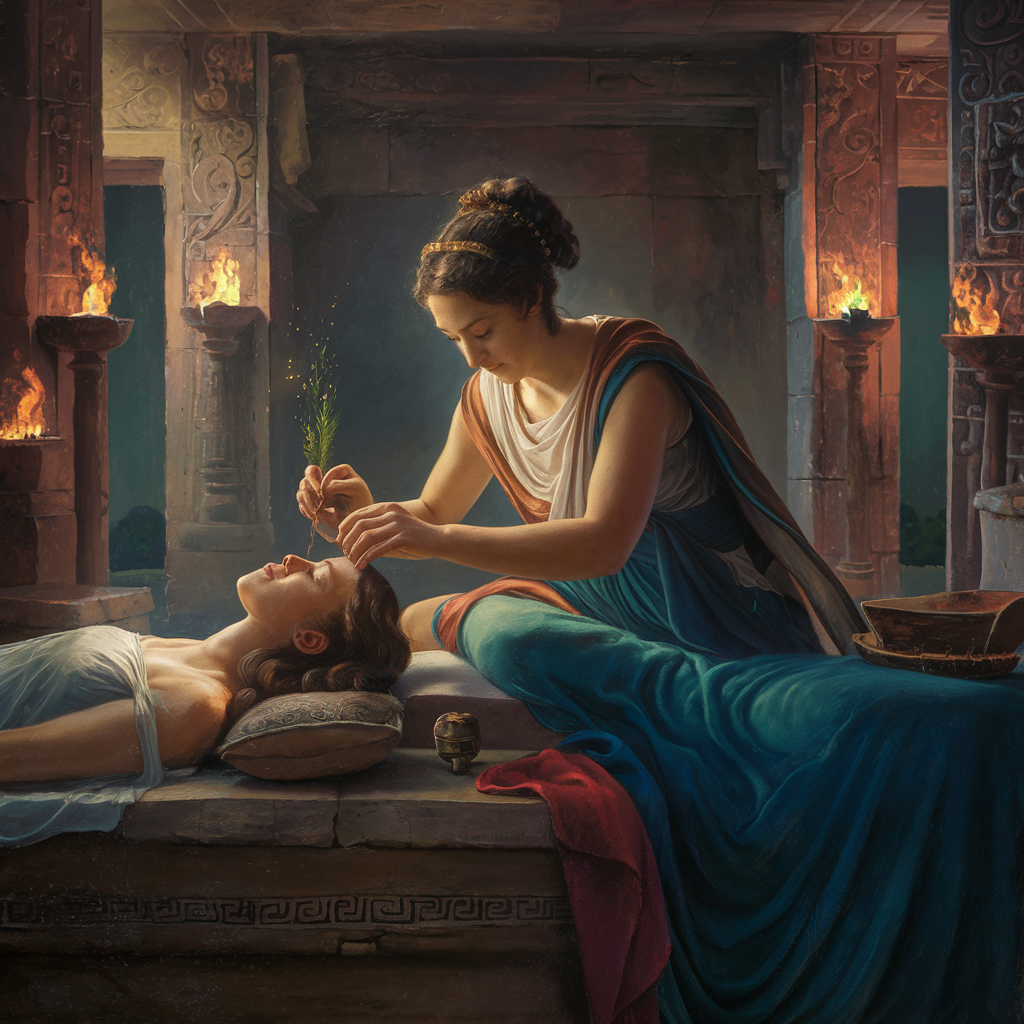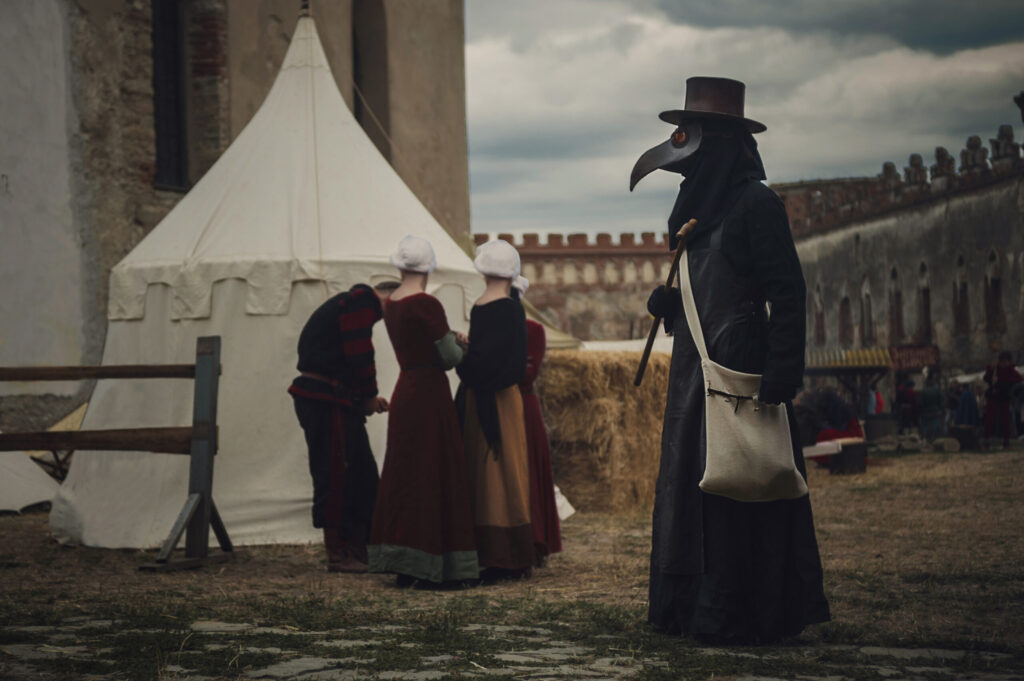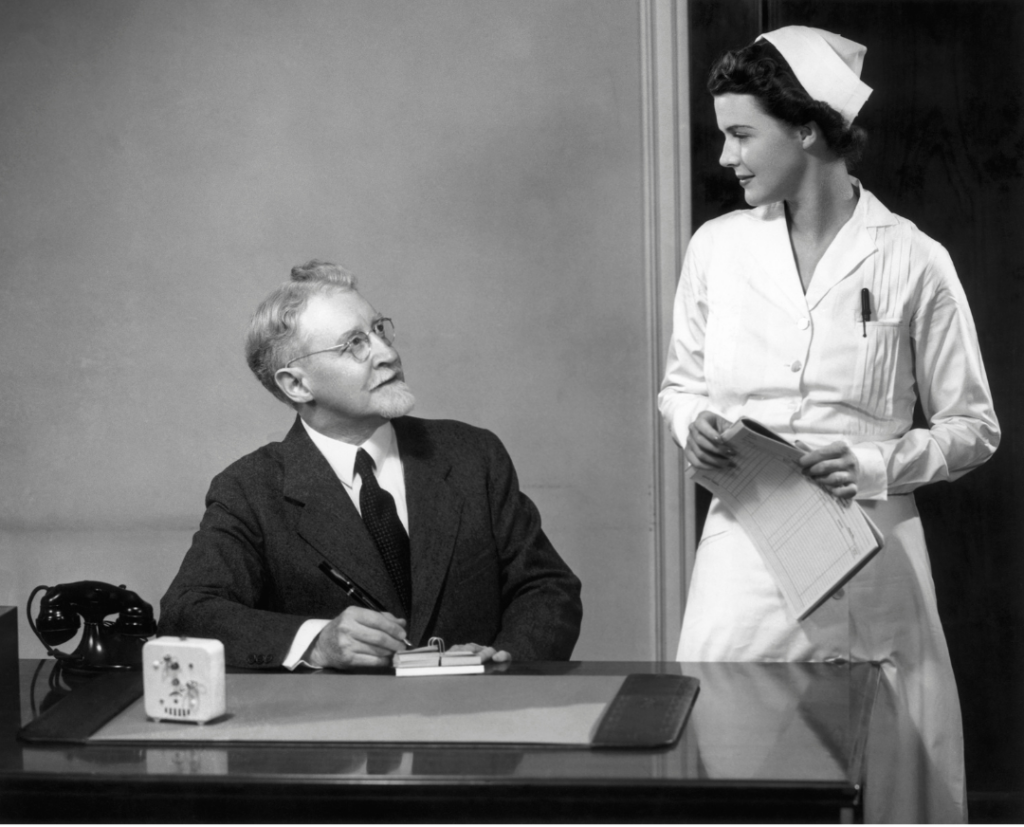More than a third of all U.S. doctors today are women. The days of referring to a female physician as a “woman doctor” are (mostly) behind us. If you looked in a medical history textbook, you might think this is something new – that women did not practice medicine before modern times. And it’s true that many barriers held women back professionally throughout the centuries, from lack of reproductive and marital control to official bans keeping women from the ranks of medical practitioners and midwives.
But some women did beat the odds and practice medicine, paving the road for today’s female physician. Let’s take a look.
The Female Physician in Ancient Times
Records from Ancient Egypt note women physicians such as Meit Ptah who lived around 2700 BCE and was a contemporary of Imhotep; Peseshet lived in the Fourth Dynasty and was called “Lady Overseer of the Female Physicians.” But it was ancient Greece who had the most famous female physicians.
Agnodice, who lived in Athens around 300 BC, was the first female gynecologist, according to Latin scholar Hyginus. Legally prohibited from practicing medicine, Agnodice cut her hair, dressed as a man, and studied under the famous Alexandrian physician, Herophilus. When she stole the business of her male colleagues, they took her to court where she revealed she was a woman. Agnodice was not only acquitted, but successfully had a law passed allowing freeborn female citizens to practice medicine.
Greece was also the home of a doctor named Metrodora (200-400 CE) who may have written the oldest medical book known to have a female author: On the Diseases and Cures of Women.

A Ban on Witches and Midwives: The Middle Ages
Education and progress slowed to a near standstill in the Middle Ages. The Church banned female physicians, as did universities and professional guilds. Nuns were permitted a limited role as healers; Hildegard of Bingen wrote Subtililates Diversarum Naturarum Creaturarum in the 11th century, in which she suggested medical remedies for common ailments. But it became almost impossible to practice medicine in Europe without a diploma from the University of Paris. In 1325, Pope John XXII ordered a ban on midwifery and female practitioners, warning that these women were practicing witchcraft.
As the late Middle Ages gave way to the Renaissance, more women earned medical degrees. The Schola Salernitana in Italy accepted female students, while historical records of two 13th century female doctors survived in Hertfordshire, England; other women are recorded as treating Bubonic Plague victims and working in pharmacies. Slowly but inevitably, women were claiming their place in the medical profession.

The 19th Century: the Rise of Women’s Medical Colleges
When a young United States admitted only male students to its medical schools, American women launched their own institutions. In 1849, Elizabeth Blackwell became the first woman in the United States to earn a medical degree. Women of color faced steeper barriers but Rebecca Lee Crumpler became the first African American woman to earn a medical degree, graduating from New England Female Medical College in 1864. She eventually cared for freed slaves who would otherwise have been denied access to medical care and penned the 1883 work Book of Medical Discourses.
By the 1860s, women could earn medical degrees from at least 3 schools for women and a few coed medical schools. Most of these schools didn’t last long, being absorbed into other universities or turning coed. But they provided a launching pad for women to enter the medical profession.
After graduating, many women found they were banned from internships, residencies, and medical societies – and once again, they began opening their own hospitals and clinics. The number of female doctors boomed from approximately 500 in 1870 to about 7,000 in 1900.
For an idea of men’s opposition to female colleagues, consider Harriot Hunt’s application to Harvard Medical School. Dean Oliver Wendell Holmes supported her but the students put forth a formal rejection: Resolved, that we object to having the company of any female forced upon us, who is disposed to unsex herself, and to sacrifice her modesty by appearing with men in the lecture room.
Hunt ultimately earned a medical degree in Syracuse as a homeopathic physician. Harvard Medical School refused to accept female medical students until 1945.

A Drop and a Resurgence: the Female Physician in the 20th Century
The future looked bright for female physicians at the dawn of the 20th century. But clinical doors began to close in their faces. Many previously coeducational schools reversed their decision and banned women again; at Johns Hopkins, the percentage of women students dropped from 33% in 1896 to 10% in 1916. In 1905, women constituted 4% of all medical graduates, but that number dropped to 2.6% in 1915. Progress slowed once again as two world wars and the Great Depression dominated the first half of the century.
In 1951, Mildred Jefferson became the first Black woman to graduate from Harvard Medical School. “I am at once a physician, a citizen and a woman,” she said, “and I am not willing to stand aside and allow this concept of expendable human lives to turn this great land of ours into just another exclusive reservation where only the perfect, the privileged and the planned have the right to live.”
Jefferson served as a surgeon at Boston University Medical Center and a professor of surgery at the university’s medical school. But she was an outlier; by 1955, less than 5% of medical graduates were women. Women were encouraged to go into nursing, rather than apply to medical school.
Second-wave feminism swept to power in the 1970s and changed everything. The demand for educational and professional reforms challenged and toppled brazenly discriminatory policies. Title IX of the Higher Education Act prohibited federally funded educational institutions from discriminating on the basis of sex.
The impact was immediate: the number of women in medical schools tripled between 1970 and 1975. Nearly half of new medical school students were women as the 21st century began.

The Female Physician Today
2021 marked the first year that a majority of medical students were female. But women still face specific challenges. Some female physicians say their patients and families often assume they are nurses. One study found that male doctors introduce their male colleagues as “Dr.” around 70 percent of the time but introduce their female colleagues as “Dr.” less than half the time. Female physicians are also more likely to report higher levels of depression and burnout than male physicians – possibly because they often shoulder a great burden in terms of childcare and housework at home.
Today, many women in the medical workforce are fighting for schedule flexibility, lactation rooms, better parental and family leave policies, childcare coverage and other changes that can benefit all healthcare professionals. Others have launched coaching, mentorship and development programs for younger women just starting their medical careers. These women are building a healthcare field that more fully represents the patients and communities that depend on them – and creating a future of insight and innovation.
How can the healthcare industry better support female physicians? If you’re a physician, what challenges have you faced? Share your thoughts with us!



2 Responses
who wrote this bbg????
Help an old guy – what’s a bbg